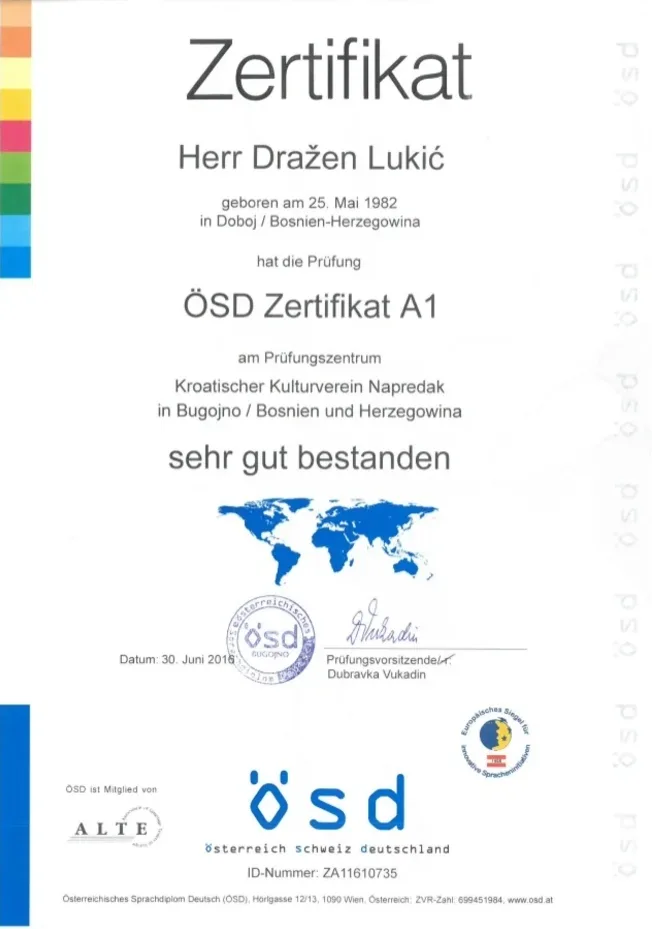Understanding the German as a Foreign Language Exam
Discovering a new language opens doors to numerous opportunities, both personal and expert. Amongst the myriad of languages spoken worldwide, German stick out as a necessary language, specifically in the context of Europe. With over 90 million native speakers and growing economies in Germany, Austria, and Switzerland, proficiency in German can provide substantial benefits. For non-native speakers wanting to validate their German language skills, the German as a Foreign Language exam functions as an essential credential.
Summary of the German as a Foreign Language Exam
The German as a Foreign Language exam, typically referred to as TestDaF (Test Deutsch als Fremdsprache), is an internationally recognized efficiency test created for non-native speakers. It evaluates individuals' reading, composing, listening, and speaking capabilities in German. The assessment is an essential stepping stone for those looking for to study or operate in German-speaking countries, as it assists in measuring the prospect's capability to use German in academic, professional, and daily contexts.
Who Can Take the Exam?

While anyone can take the TestDaF no matter age, it is primarily aimed at:
Students wishing to make an application for universities in Germany or other German-speaking countries.
Professionals wanting to improve their career prospects in German-speaking regions.
Immigrants seeking citizenship or permanent residency in Germany, Austria, or Switzerland.
Levels of Proficiency
The TestDaF examines prospects throughout four key components which align with the Common European Framework of Reference for Languages (CEFR). It is segmented into the list below levels:
TDN 3: Intermediate level, appropriate for a lot of university courses.
TDN 4: Upper intermediate level, often required for academic programs that require strong language abilities.
TDN 5: Advanced level, anticipated for extremely specialized research studies or expert work in German-speaking environments.
Exam Structure
The structure of the TestDaF includes 4 sub-tests, which collectively take approximately 3.5 hours to finish. Here's what candidates can expect:
Listening Comprehension (40 minutes):.
Audio recordings associated with daily circumstances and scholastic scenarios.
Candidates address questions based on the product.
Checking Out Comprehension (60 minutes):.
Texts from various fields like literature, social sciences, and natural sciences.
Concerns examine understanding of the main concept and detailed information.
Composed Expression (60 minutes):.
A writing job, typically involving the analysis of an offered topic or text.
Candidates must demonstrate clearness, coherence, and appropriate style.
Spoken Expression (30 minutes):.
An interactive speaking test carried out with an examiner.
Prospects are examined on their capability to engage in discussions, give discussions, and react to questions.
Preparing for the TestDaF.
Preparation for the TestDaF is crucial, as it provides candidates the finest chance to be successful. Here are deutsch test and resources to consider:.
Research Study Various Resources.
Language Courses: Enroll in intensive German language courses customized for TestDaF preparation.
Online Resources: Utilize platforms like Duolingo, Babbel, or Goethe Institute's online offerings.
TestDaF-specific materials: Acquire practice tests from the TestDaF official site or language bookstores.
Practice Regularly.
Speaking: Engage in conversation clubs or partner with language exchange partners.
Composing: Practice writing essays and letters in German, seeking feedback from native speakers or instructors.
Listening and Reading: Immerse yourself in German media by watching films, listening to podcasts, and reading newspapers.
Mock Exams.
Taking mock tests under timed conditions can help acquaint candidates with the test structure and enhance time management abilities. Organizations frequently offer practice examinations to assist trainees in assessing their preparedness.
Importance of the Exam.
The significance of the TestDaF extends beyond mere academic recognition. Here are numerous reasons why taking this exam is worthwhile:.
University Admissions: Many German universities need a particular TestDaF score for admission to programs taught in German.
Career Opportunities: Proficiency across the four language abilities can enhance employability in multinational companies or companies in German-speaking regions.
Cultural Engagement: Mastery of the language enables deeper connections with German culture, literature, and history.
Immigration: Proficiency in German may be needed for residency licenses or permanent residency applications.
FAQs.
What rating do I need to pass the TestDaF?
There is no universal pass mark; it varies by institution. Usually, a rating of TDN 4 agrees with for university admissions.
How often can I take the TestDaF?
You can take the TestDaF several times. Nevertheless, it is ideal to permit enough time for improvement in your language skills before reattempting the test.
How long are the outcomes valid?
TestDaF results are generally valid for two years. It is a good idea to check the specific requirements of the organization or company you are applying to.
Where can I take the TestDaF?
The evaluation is available at various screening centers worldwide. The official TestDaF site supplies a locator tool for finding neighboring screening centers.
Exists a particular age limitation for taking the TestDaF?
There is no age limit for taking the TestDaF. Whether a teen or an adult, anyone interested in proving their German language skills can sign up for the exam.
Conclusion.
The German as a Foreign Language exam is a crucial element for anybody wanting to study, work, or immerse themselves in German-speaking societies. With committed preparation and the best resources, prospects can browse the exam successfully and display their proficiency in the German language, unlocking numerous opportunities in education and career courses. Embracing the obstacle of discovering German not only leads to scholastic or professional advancements however also improves individual viewpoints through the understanding of a brand-new culture.
